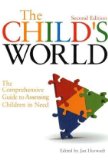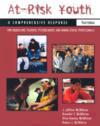Infant Attachment
August 2019 - Having a baby is one of the biggest events a person can ever go through. From the moment your child is handed to you by a certified professional midwife to them having kids of their own, not only does it bring new life into the world, but it changes yours. Attachment between a parent and infant is one of the strongest human relationships in existence - but how does it form? Well, Schaffer and Emerson came up with stages for attachment, so read on to find out more about this incredible part of life.
The Experiment
Schaffer and Emerson conducted their experiment in 1964, when 60 babies were studied for the first 18 months of their life, each baby being visited monthly for a year. They were kept in their own home as a natural setting, and the baby's behavior was observed and caregivers interviewed. The mother also kept a diary to identify any stranger anxiety (upset around strangers), separation anxiety (distress when taken away from caregiver and degree of comfort needed on return), and social referencing (how much a child looks to their caregiver to establish how to respond).
Asocial Stage (0-6 weeks)
The first stage Schaffer and Emerson identified was the Asocial stage, occurring from birth up until 6 weeks. It is named 'asocial' because the infant produces a favourable reaction (such as a smile) to both social and non-social factors. At this stage, there's not an attachment or even a preference for social interaction.
Indiscriminate Attachments (6 weeks to 7 months)
This is the point where infants start to enjoy human company, albeit equally, so there’s no preference for a specific person. But there is still a preference for social interaction and distress when this interaction is stopped. At around 3 months, the infant will also start to smile more at familiar faces, and when distressed, they can easily be soothed by a regular caregiver, so we can see the attachment starting to form.
Specific Attachment (7-9 months)
At this stage, the infant will gain a preference for one specific caregiver and looks to that person for protection, safety and comfort. This is the first time the infant will display a fear of strangers and separation anxiety, and although this can be seen in different intensities, this is nonetheless a sign that a baby has formed an attachment. Often, this primary attachment will form with the person who shows most sensitive responsiveness (who responds best to the baby's signals - most often the mother).
Multiple Attachments (10+ months)
Most babies form several attachments to other caregivers by 18 months (for example, the father and/or grandparents). Because of this, the baby also becomes more independent, as they can be comforted by more than one person. Again, attachments are most likely to form with those who display sensitive responsiveness. Interestingly, infants who are overly attached have primary caregivers who responded immediately to demands, and weakly attached infants have primary caregivers who rarely, if at all, interact.
The stages of attachment are intriguing when it comes to how a baby learns to connect with individuals around them. The interesting thing here is that attachment is not dependent on evolutionary factors like food but emotional and social factors.
 The Child's World: The Comprehensive Guide to Assessing Children in Need At-risk Youth: A Comprehensive Response for Counselors, Teachers, Psychologists and Human Services Professionals |